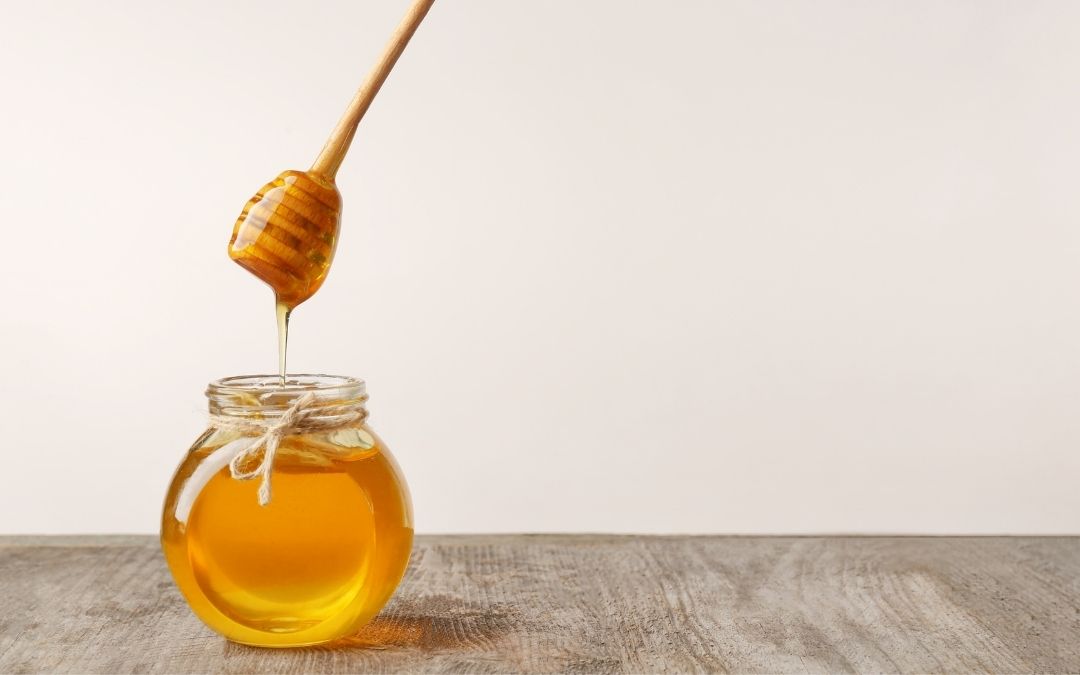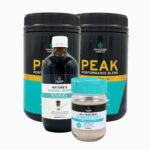Fructose is one of a long list of foods to be demonised. But it’s not that black and white. To understand why fructose is not all bad, first, let’s take a look at the food norms a few decades ago, when I was growing up.
I was born in 1960. My Mum was American and the best cook in the world.
She made everything from scratch. Her pantry may have been small with just the basics, but from that pantry we had it all.
She would shop at the local butcher and local fruit and vege store, our milk and cream would be delivered by the local dairy and there was a little ‘Four Square’ store down the road where she would buy, flour, sugar, salt, spices, cocoa, nuts and seeds.
Thousands of different recipes came from her kitchen. Spectacular main meals of roasts, slow cooks, fish and poultry, all accompanied by an assortment of vegetables from below the ground and above.
I don’t ever remember an evening meal without dessert; we had pies, crumbles, cakes, puddings, flambés and so much more. The bases of the desserts were flour, sugar and butter.
I had two siblings. My mother made our lunches in brown paper bags every day except for Fridays. In the bag was a sandwich – usually peanut butter, banana and honey – a piece of fruit and a cookie, homemade by Mum. My favourite was chocolate chip, but she also made a pretty good Snickerdoodle.
On Fridays we were given money to buy food at the tuck shop. My usual choice was a meat pie and a chocolate éclair. On the way home, if I hadn’t spent all my money, I would go to ‘Gillies Pies’ in Bendigo and buy a vanilla slice or to the local fish and chip shop and purchase 5 cents worth of hot chips, smothered in salt and vinegar.
Breakfast in the winter was porridge and in the summer my Mother made a homemade muesli, or we would have pancakes, bacon and eggs, or muffins.
In the 60’s and 70’s I don’t remember many overweight kids in my school. I think there was one, and sadly she was teased. My sister, brother and I were definite light weights and so were all our friends, yet we had a diet fairly high in carbohydrates, and sugar for that matter.
What’s Changed Since the 60s and 70s?
Back then, there were no dietary guidelines – instinct and culture drove food consumption.
There were no large supermarkets in our town, just small corners stores and speciality food shops – butchers, fruit and vegetable stalls, dairies and bakers and most people had a small vegetable garden and a few fruit trees in the back yard. We also had incinerators for our rubbish and if we did have a rubbish bin, it didn’t need wheels because it was small and there was not much to throw away
The food we ate in the 60s and 70s had no additives, flavours, colours, acidity regulators, synthetic biology products, bioengineered products, no GMO’s and there was no glyphosate sprayed on food (although other chemicals may have been present). The food you purchased had very few food additives and very little packaging. In other words, food was real.
We had robust health, there were very few presentations of food allergies and food sensitivities, coeliac disease was rare and, for the most part, people had good gut health.
Both of my grandmothers ate like this too; they didn’t take medications until they were toward the end of their life and they both lived into their nineties. They were born before the chemical revolution governed agriculture and before medications were considered ‘normal’ and people started popping them like lollies. They also sourced a lot of their food from the garden.
We’ve lost sight of what health really is. We’ve forgotten that just a short time ago humans were healthy with no need for prescription medications every week of the year. Our animals never went to the vet and our children did not have the chronic diseases we see today. In Australia 38 to 40% of the children under the age of 17 have one or more chronic diseases. By the age of 65, 80% of the population have a chronic disease. In the US, over 50% of the children have a chronic disease. It’s a disgrace to the so-called healthcare system that exists today.
Since I began studying nutrition back in 1980, I’ve seen each of the macro nutrients demonised: first it was fat, then sugar and now even animal protein is being demonised.
The Demonising of Sugar
In this article I want to talk about the demonising of sugar. And when I talk about sugar, I don’t just mean the white stuff, but rather carbohydrates and, more particularly, fructose and fructans.
Humans have adapted to different foods and different environments in order to survive to the present day. Some people survived almost entirely on meat and animal products while other people ate more plant-based foods with smatterings of animal or fish protein. It all depended what food was available, what environment they lived in and what they had to do to survive.
Carbohydrates and fructose were available to all at some point in the seasonal eating; it was rare for a tribe or culture not to have some. If the tribe or a tribe member had an issue with carbohydrates or fructose, then they may not have survived.
Fructose is mainly found in fruits, some vegetables and honey. Fructans, the short chain polymer of fructose (a string of fructose), are found in wheat, barley, rye, garlic, onions, chickpeas, dates, prunes, raisins, asparagus, artichokes, yacon, leeks and watermelon.
These are all real foods that in the past caused very few issues. But fructose malabsorption and/or avoiding FODMAPS (fermentable oligosaccharides, disaccharides, monosaccharides and polyols) known as the FODMAPS diet, has become trendy since around 2007 (although fructose malabsorption was starting to be seen late 1990s and early 2000). The FODMAPS diet has been used to treat symptoms of IBS (Irritable Bowel Syndrome).
The question to ask here is, “How can an old traditional food cause a modern disease?”. Removing fructose and fructans from the diet is the norm, which brings relief to the symptoms of IBS, but we have to consider the root cause and why now, in the past two decades particularly, everyone has been quitting sugar.
Just to note, there has been an increase in high fructose corn syrup, fructose syrup, agave syrup, yacon syrup and so on. These are in many packaged foods and drinks, so consuming these will cause issues. What I am addressing here is the natural fructose in food – is it really that bad?
Understanding fructose in the body is step ONE.
Digestion, Absorption and Metabolism of Fructose
Fructose can only be absorbed by the body as a single unit, so enzymes must act on bonds where fructose is paired to another fructose or glucose molecule before being absorbed into the blood stream at the small intestine. Fructose travels with all other absorbed nutrients to the liver for metabolism and processing. Fructose is converted in the liver to glucose where it enters the Kreb Cycle in order to make energy for the body’s metabolic needs.
If there is an excess of fructose then it is converted to triglycerides and stored in the body’s fat deposits or sometimes the liver. Years of build-up of fat in the liver causes a condition called fatty liver disease which leads to insulin resistance and metabolic disease. But this comes about for several reasons.
Fructose is Important for the Microbiome
Fructose is also important for bacteria in the human gut. The bacteria lactobacilli, bifidobacterial and enterococcus faecalis are examples of how we use fructose that we consume to produce metabolites that the human body then uses. These metabolites include three aromatic amino acids: tyrosine, phenylalanine and tryptophan. These amino acids then, in turn, produce neurotransmitters and melanin. Other metabolites produced by these microbes using fructose in a biochemical pathway (shikimate pathway) are co-enzyme Q10, enterobactin (iron carrier) and folate.
When we have healthy gut bacteria it has the capacity to drown out bad bacteria. These pathogenic bacteria also use fructose, but their waste products can include formaldehyde and other inflammatory metabolites producing cytokines which promote inflammation in the body. This can underlie diseases such as heart disease, dementia, mental illness and autism to name a few.
Approximately half the population has some sort of digestive issue. Poor dietary habits, antibiotics and other medications have all contributed to the destruction of the microbiome. But the elephant in the room is the prolific use of glyphosate in agriculture since 1996 (note the year).
Glyphosate is the active ingredient in 596 registered products in Australia including Roundup. It is a patented broad spectrum antibiotic, herbicide and chelating agent, with some pathological bacteria being resistant to this chemical including some species of clostridium, listeria and salmonella. There are multiple strains of clostridia and salmonella; the pathogenic strains are known to have the most resistance to glyphosate. When we kill the good bacteria in the gut and allow clostridium and salmonella to proliferate, then not only does fructose malabsorption occur, but the pathogenic bacteria with their waste products can produce IBS symptoms and so much more.
So perhaps fructose is not the problem but rather our ability to use the natural fructose we consume. In my way of thinking, eating foods that have not been sprayed with Roundup or a glyphosate-containing product would be a wonderful start to changing the flora in the gut in order to be able to eat natural fructose-containing foods without disease and discomfort.
I haven’t quit sugar nor fruit nor carbohydrates.
To the best of my ability I eat foods from my local area that are not sprayed with harmful chemicals including glyphosate. Or I choose to purchase foods that cannot be grown in my local area from a reputable source (Changing Habits, Loving Earth). If I won’t have it in my pantry, it will not be in the Changing Habits shop.
I have also put myself on the council chemical register so that I know when they are spraying glyphosate and other dangerous chemicals in my area.
I choose to be part of a solution and not part of a problem. If we continue to eat foods that have been sprayed with glyphosate, then we perpetuate the destruction of the human microbiome and thus our physical and mental health, natural immunity and the health of future generations.
This is not something to take lightly. If you support the farmers that produce food using glyphosate and other chemicals, then you are agreeing to the slow decimation of the ecology of the soil and us humans. We have lived with microbes throughout history; they are important to us and without them we would be dead. Honour them by eating real foods, free from chemical sprays, and watch your health improve.
Cyndi









0 Comments